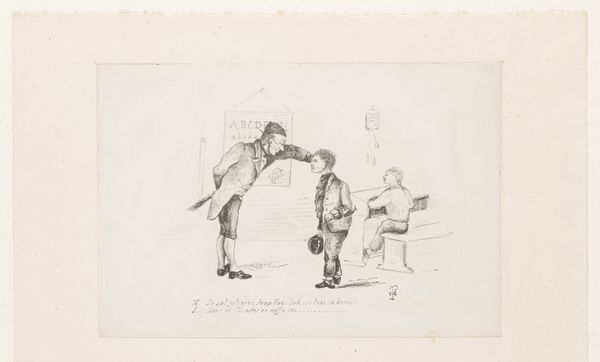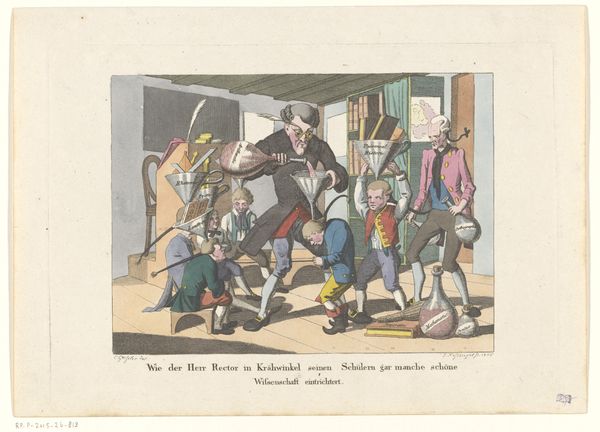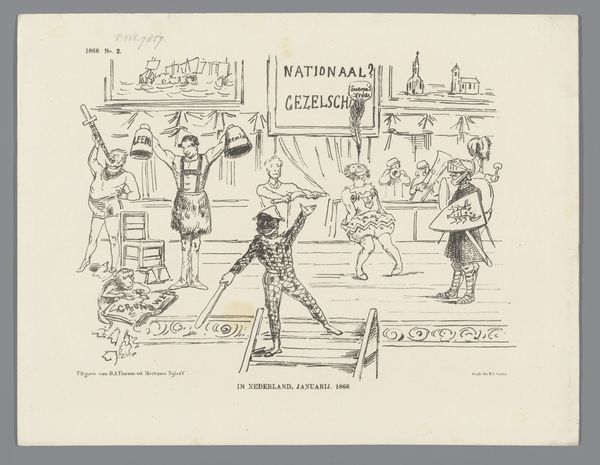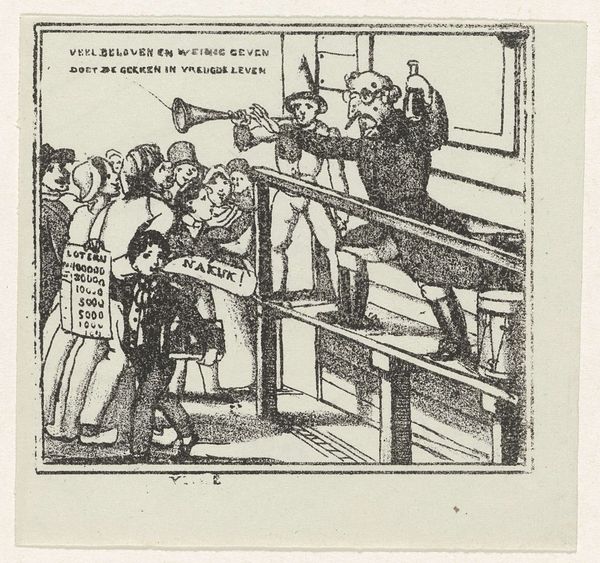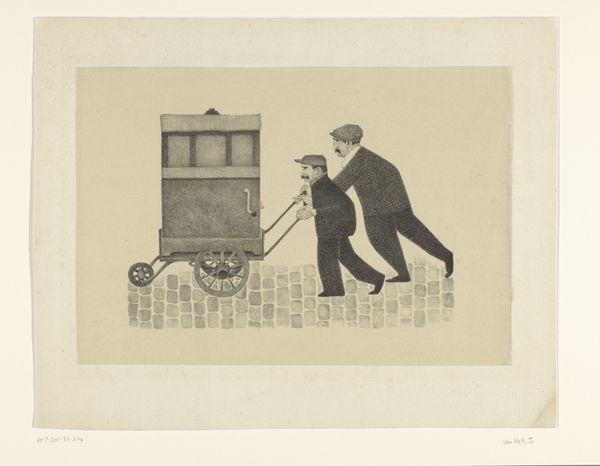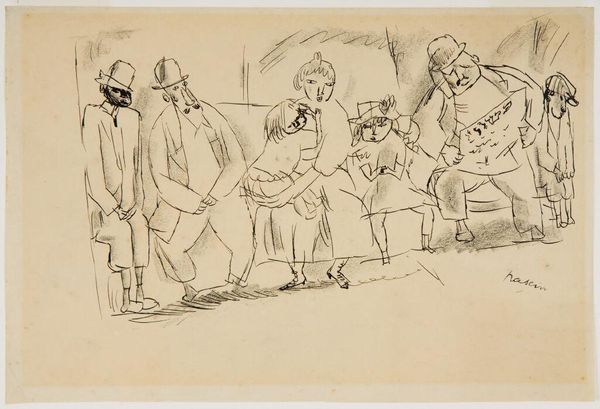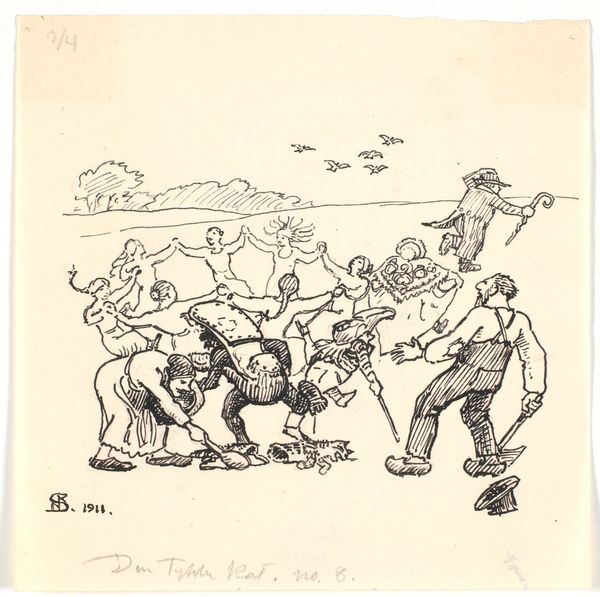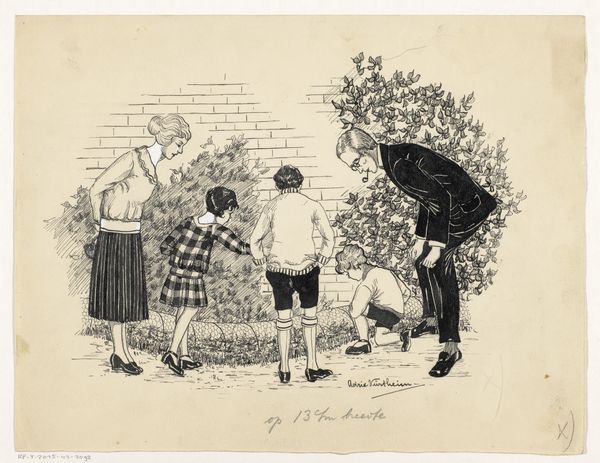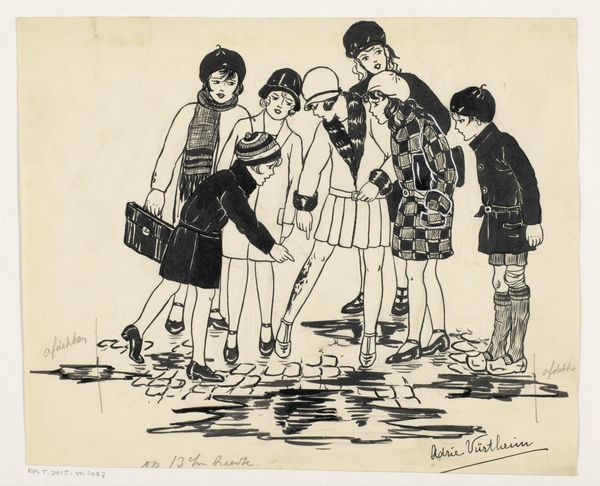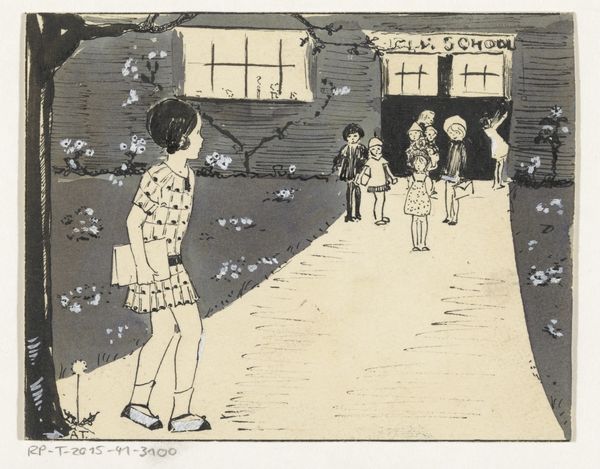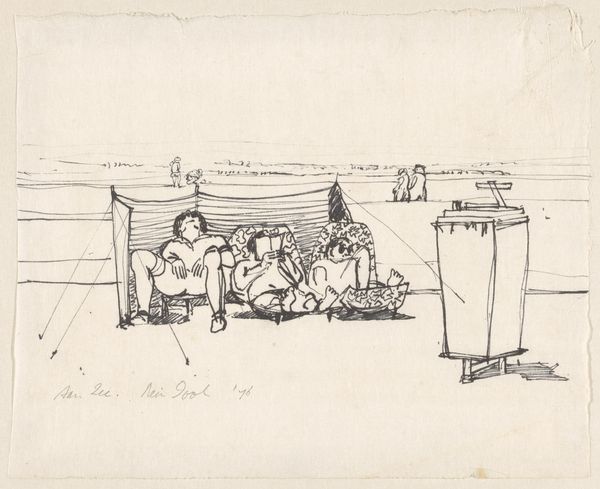
drawing, paper, ink, pen
#
drawing
#
comic strip sketch
#
aged paper
#
narrative-art
#
sketch book
#
figuration
#
paper
#
personal sketchbook
#
ink
#
idea generation sketch
#
sketchwork
#
pen-ink sketch
#
comic
#
sketchbook drawing
#
pen
#
genre-painting
#
storyboard and sketchbook work
#
sketchbook art
#
modernism
Dimensions: height 185 mm, width 271 mm
Copyright: Rijks Museum: Open Domain
Curator: Wybo Meijer's drawing, "Glijdende jongens op een pad," created sometime between 1895 and 1942, presents a fascinating vignette rendered in ink on paper. Editor: Wow, that scene just explodes with childhood chaos and charm! It's got that spontaneous, ink-splattered energy of a captured moment. Gives me flashbacks to scraped knees and endless afternoons. Curator: Note the composition. The artist employs a raised perspective, likely to facilitate depth while allowing the children space on the ramp or bridge in the middle ground. See also the brickwork occupying a rather oppressive portion of the bottom third. Editor: Oppressive maybe, but it anchors the whole scene, right? Keeps it from floating away on pure whimsy. Those contrasting lines in the brick give such texture. Speaking of structure, there are about six children; all seem to be playing except for a dour looking figure that appears like a school monitor. Curator: An interesting interpretation, which the visible layers would seem to corroborate. But the use of pen and ink allows for some sophisticated tonal variation. You can appreciate how Meijer used the hatching technique to model the forms of the children and lend dimensionality to their clothing. It's deceptively detailed for a sketch. Editor: Detail isn’t just formal; I read it emotionally, too. Check the kid sprawled upside down in the lower-left corner – classic comedic timing! Meijer really caught the sweet agony of gravity at its finest. Is it wrong to call that expressionism, given those wildly caricatured features? Curator: To describe this work in terms of “expressionism” requires consideration. Semantically it would be a stretch, though I understand your observation regarding distortion to convey feeling. We see similar distortions in works made after the First World War, though stylistically dissimilar from Meijer. However, its raw, unadulterated capture of everyday life aligns with genre painting's interest in democratic, modern subject matter. Editor: That’s it, isn't it? A celebration of simple joys amid harsh reality, even with this sombre chap on the right. The beauty of ink: a permanent stain reflecting life itself. Thanks, Wybo. Curator: Indeed, a poignant reflection on youth, fleeting moments and their lasting impressions rendered with deft skill in this modest piece.
Comments
No comments
Be the first to comment and join the conversation on the ultimate creative platform.

